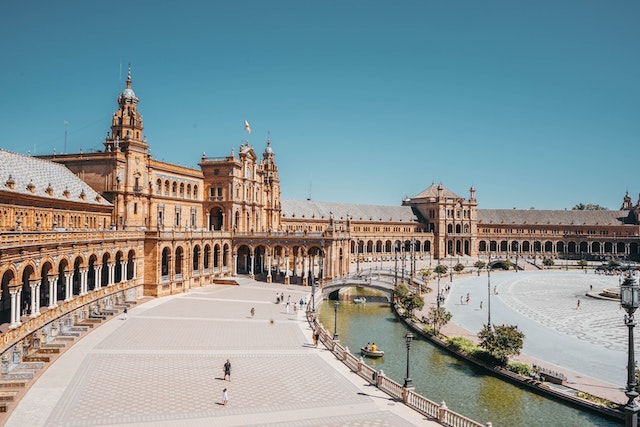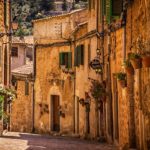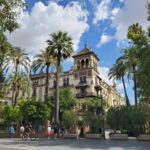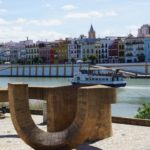How to Navigate Seville’s Old Town

The closer you are to the center of Seville, the more you have to rely on social and mental maps instead of physical ones.
While studying journalism in Seville during my junior year of college, I was initially thrown off by the city’s casco antiguo, or Old Town. This area is the oldest section of Seville that lies on the east side of the Guadalquivir River, bordered by newer sections of the city that spread out to the north, south, and east. It’s filled with narrow cobblestone streets that flow into and out of small plazas, apartments and stores jammed up next to each other, as well as an alarming dearth of street signs.
Many of the smaller roads and alleys are labeled on tourist maps but have no street signs or names, or curve around in unexpected directions contrary to what the map indicates. So a map won’t necessarily show you precisely which street or plaza is closest to you—not to mention that stumbling around with your eyes glued to Google Maps isn’t the ideal vacation activity. As a result, I would advise you to learn the layout of Seville through your feet.
I spent my time in the city forcing myself to navigate based on landmarks recommended by locals. If not for that, I might not have even thought to swing by La Alameda (the boulevard), a long, rectangular plaza in the heart of the casco antiguo. This area is famous for having lots of popular bars, restaurants, gelato shops, and a movie theater, as well as various fairs and mercadillos (local markets) by day, and nightclubs by night. It’s a great hangout hotspot and an easily accessible landmark that almost everyone knows.
As citizens of a popular tourist destination for both Spaniards and foreigners alike, sevillanos are used to tourists asking newbie questions.
Using landmarks helped me travel outside the Old Town to other sections of the city, too. Live in the casco antiguo and want to meet up with someone from the Los Remedios neighborhood on the west side of the river? Tell your friend, “Let’s meet at the south end of the Alameda and decide where to walk to from there.” Or, if you want to gulp down a sandwich and a local Cruzcampo beer at the Facultad del Derecho, the main building of the University of Seville, suggest, “Let’s go by 100 Montaditos next to the Facultad. It’s Monday, so they’re having a 1 euro promotion tonight.”
There’s still always the option of stumbling around until you find a café and then dropping in to ask directions. As citizens of a popular tourist destination for both Spaniards and foreigners alike, sevillanos are used to tourists asking newbie questions. But it’s much more satisfying to be able to navigate on your own by spotting the medieval tower of La Giralda to the east or the sleek steel Betis Tower to the west. And if you already have social connections in the city and really can’t find a landmark, there’s always the lifeline of Whatsapp.
Whatsapp is a free smartphone app that lets you text and make calls (albeit lower-quality calls) over WiFi and cellular data, making it a great free alternative to a regular texting plan. It’s also very popular in Western Europe. Every college student I got to know in Spain used it as her primary quick-communication tool; Facebook was prevalent as well, but to a lesser extent.
When navigating Seville’s Old Town, you may find that spatial and social navigation require more time and effort than falling back on maps. But they’ll dispel disorientation much more effectively.
Photo credit by Unsplash.








